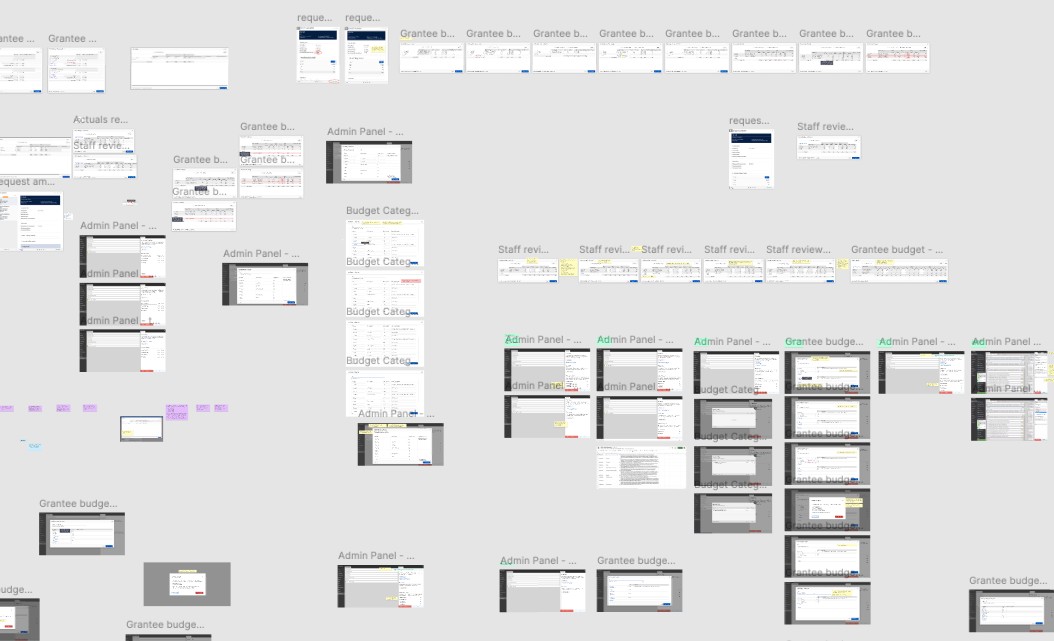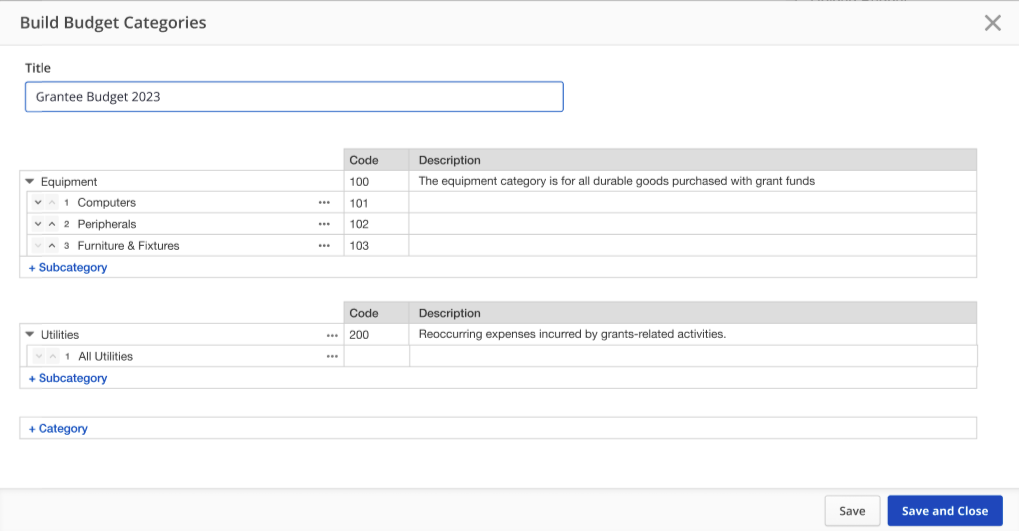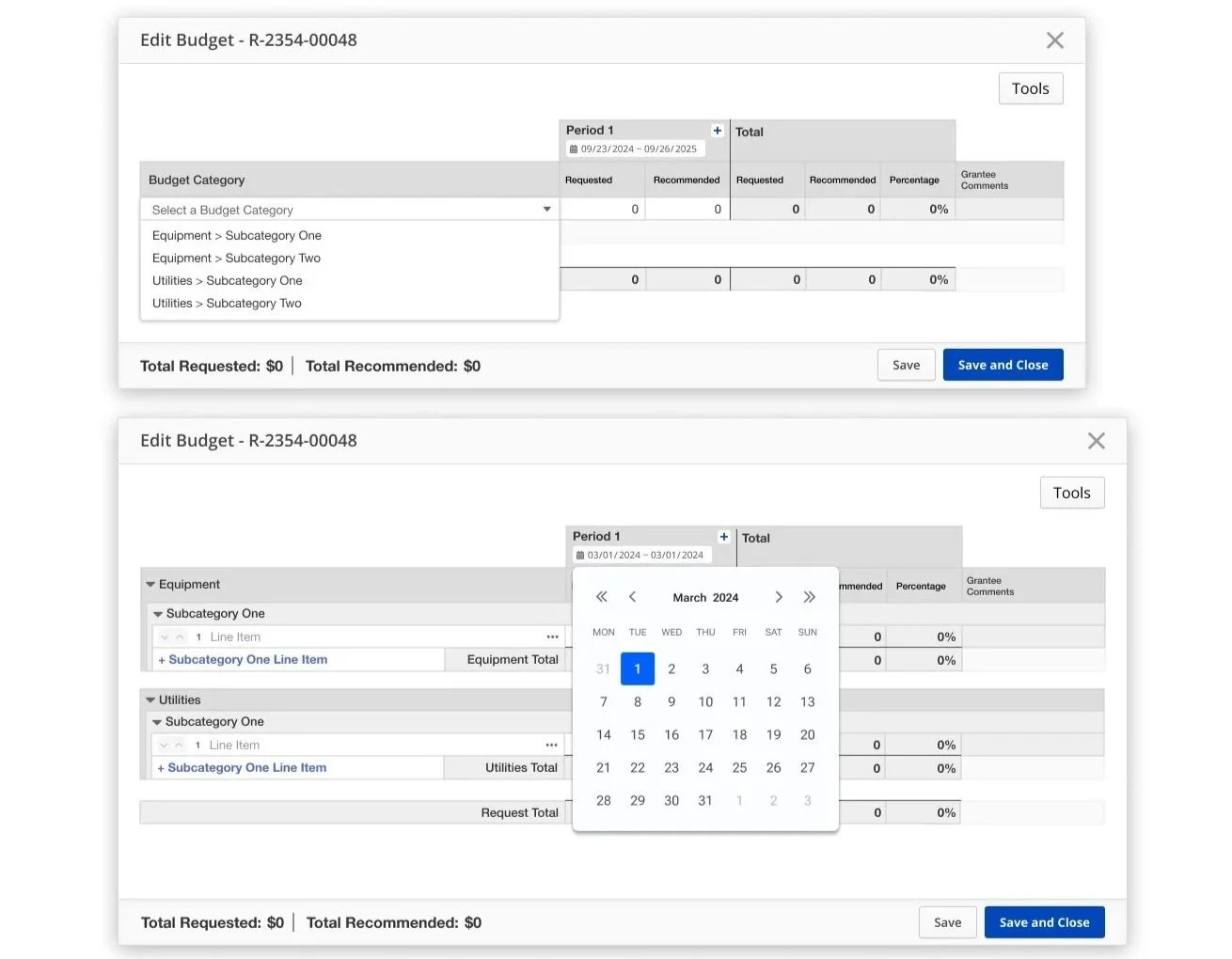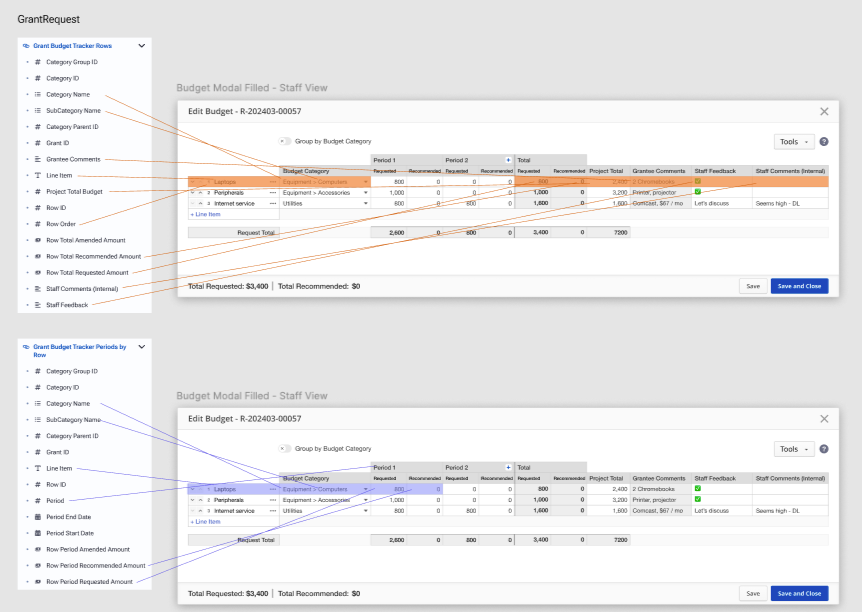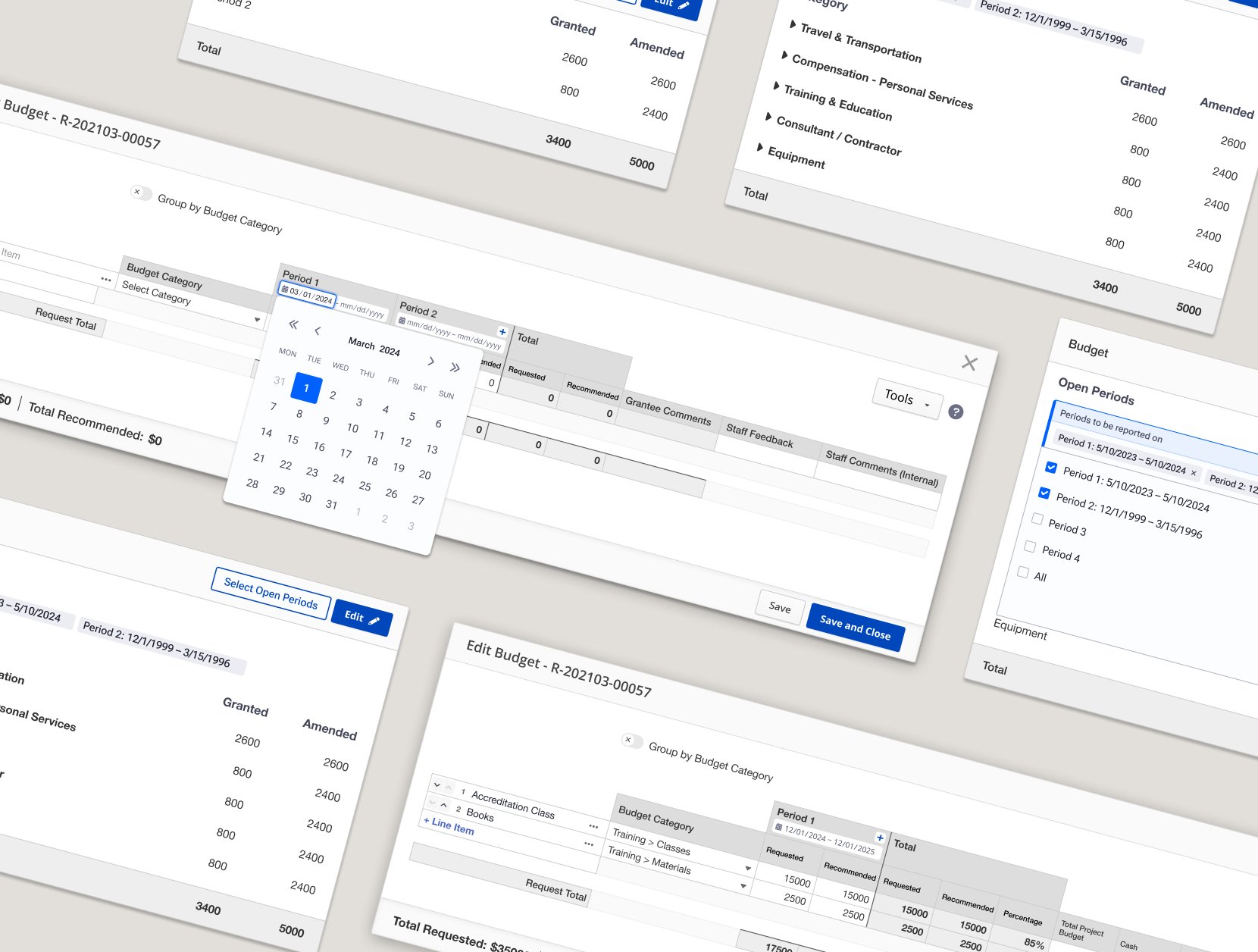
Grant Accounting Suite
End-to-End Accounting Support for the Grant Lifecycle
Designed an accounting tool for Fluxx’s core platform, streamlining financial management across grantmaking workflows, driving a 10% increase in net new ARR, and reduced task completion time by 40%, by moving budget management directly into the platform.
ROLE + YEAR
Sr. Product Designer, 2024-2025
PROBLEM SPACE
Accounting for grantee spending was messy, with scattered spreadsheets and unclear allocations.
Back-and-forth communication made tracking budgets time-consuming.
Users needed clarity, and grantees needed guidance.
PRODUCT
SOLUTION
Designed an intuitive budgeting tool that structures the grantmaking process.
Centralized budgets for easier management and tracking.
Provided funders with real-time visibility from pre- to post-award.
Understanding funding in grantmaking
First, I dove into how grantmakers fund grantees across sectors—from private family foundations to government agencies. Our platform manages over $1B in funding, but each organization’s complex, varied processes often create a fragmented and time-consuming experience for grantees and foundation staff.
What we heard:
“I’m constantly jumping between spreadsheets and emails—there’s no single place to get a clear picture.”
“I’m never quite sure how much money is left or approved, it’s like flying blind.”
“Messages get lost or contradict each other, which slows down the whole process.”
“Reconciling what was promised versus what’s actually spent is a constant struggle.”
Key findings
Grant budgeting and accounting is fragmented and manual, causing confusion and delays. A unified, user-friendly tool is needed to streamline workflows and improve financial visibility.
What should we build?
Initial Feedback:
Feedback from customers and internal teams highlighted fragmented budgeting workflows. Grantees relied on external spreadsheets, and grants managers faced bottlenecks, creating delays and confusion.
Possible Approach:
We could created a centralized, intuitive budget table that:
Simplify planning: Allows grantees to enter and manage planned spending during the request phase.
Speed up approvals: Enables grants managers to review and approve budgets efficiently, eliminating workflow bottlenecks.
Enhance reporting: Lets grantees update actual spending versus approved amounts, improving transparency and saving time.
Drive adoption: Encourages users to track all budgeting activities directly within the platform, reducing reliance on external tools.
But we need more time with users to understand exactly what they need from this feature.
Early iterations of screens - working quickly to get ideas out and tested
Initial protoypes
User feedback showed that while the prototype was a good starting point, it oversimplified the budgeting process. It did not fully address the detailed requirements users needed to comply with various laws and financial regulations. This highlighted the need to incorporate more nuanced budget components to ensure the tool supported real-world compliance and accuracy.
A smarter, faster budgeting experience
The final design delivers a user-friendly accounting suite that balances detail with simplicity. Grantees plan confidently, while grants managers review and approve budgets quickly, reducing errors and speeding funding decisions. Real-time updates during spending reports enhance transparency and trust, keeping teams aligned and making grant workflows seamless and collaborative.
Key Outcomes:
10% increase in net new ARR: Delivered a tool that met customer needs and empowered sales and marketing throughout the pipeline.
40% faster task completion: Centralizing budget management within the platform eliminated spreadsheets and manual reconciliation, improving accuracy and saving time.
Feature Highlights:
Intuitive budgeting that handles nuanced components without overwhelming users.
Streamlined approvals for faster, error-free decision-making.
Real-time visibility for transparency and team alignment.
Collaborative workflows connecting grantees and managers efficiently.
Compliance-focused design informed by user feedback to meet legal and financial regulations.
This redesign transformed budgeting from a fragmented process into a centralized, efficient, and reliable experience, supporting both user adoption and real-world impact.
Interactive tables provide end-to-end visibility and control over grant data.
Detailed budgets ensure clarity and accurate reporting.
Admins in charge: configuring the foundation
As we refined the budget table, we discovered that customers managed their finances in varied ways, with no standard approach across the nonprofit sector. This revealed the need for the Admin role on our platform to have more individualized control.
So I built a brand new tool that allowed users to:
Customize budget categories in line with internal fiscal codes.
Enable metadata input to ensure alignment with internal fiscal teams and compliance with relevant laws and regulations.
Establish consistent parent and child categories for grantee budgets, improving data consistency and reporting accuracy.
What’s next?
With the core budgeting tool launched, our next focus is on enhancing customization and expanding reporting capabilities. One key priority is ensuring all data captured at the individual row level in the budget table can be fully reported on.
We’re working to make this data seamlessly accessible and connected to our Grantelligence data visualization tool, empowering users to surface insights, track trends, and drive smarter decisions.
We're also exploring features like flexible budget templates, validation rules, and deeper integration with internal financial systems. Ultimately, we aim to turn budgeting into a strategic asset for both funders and grantees.


